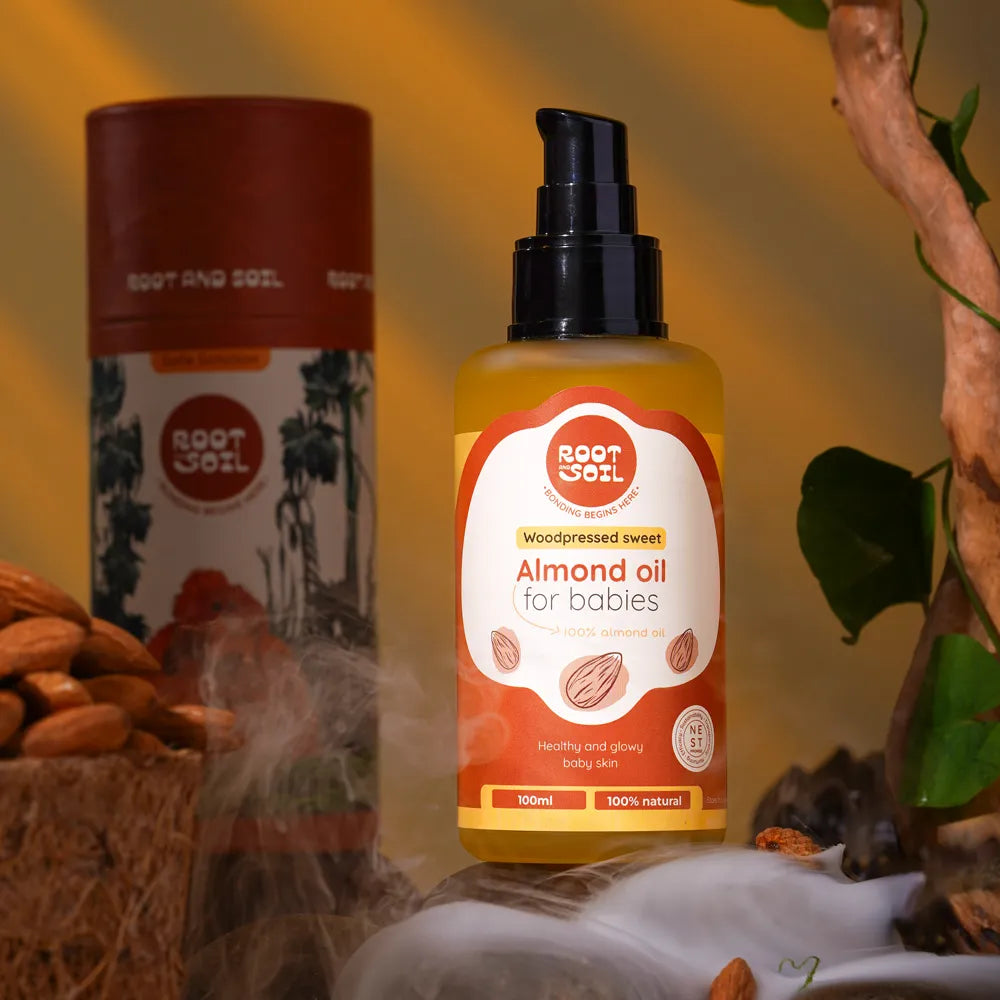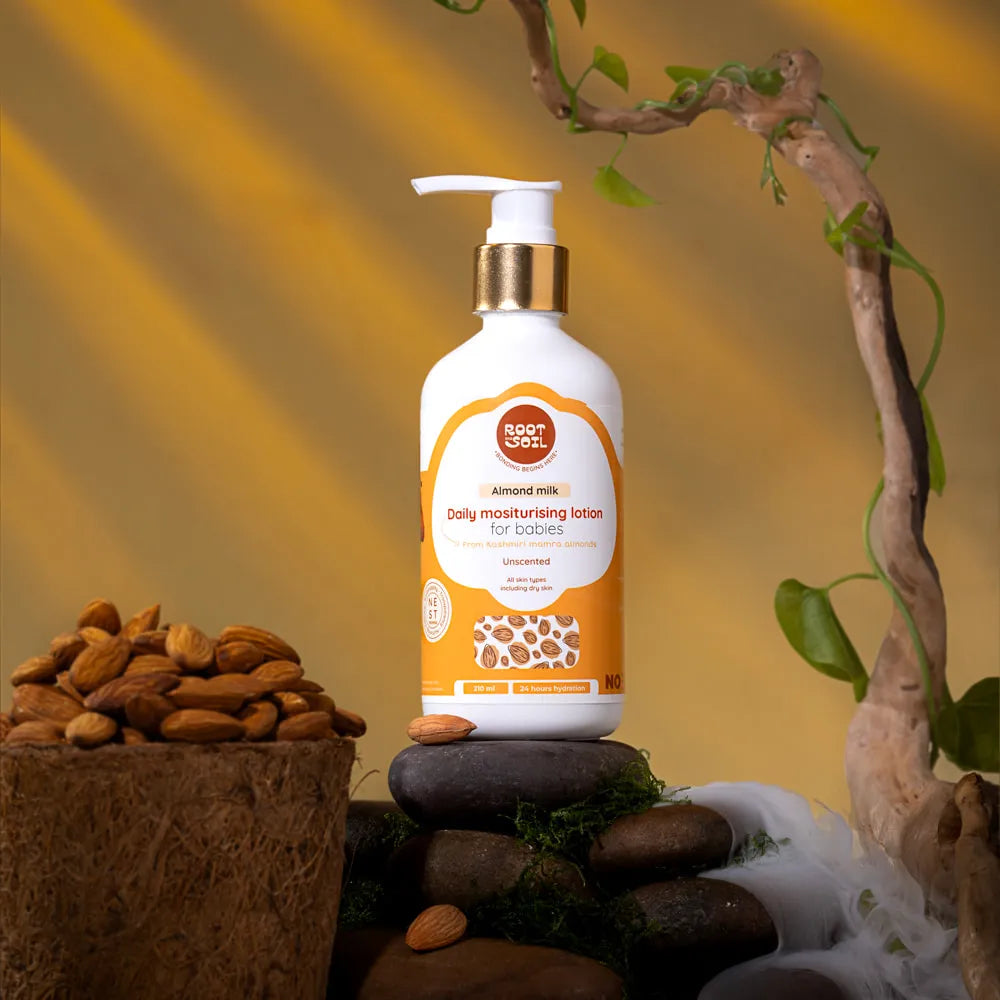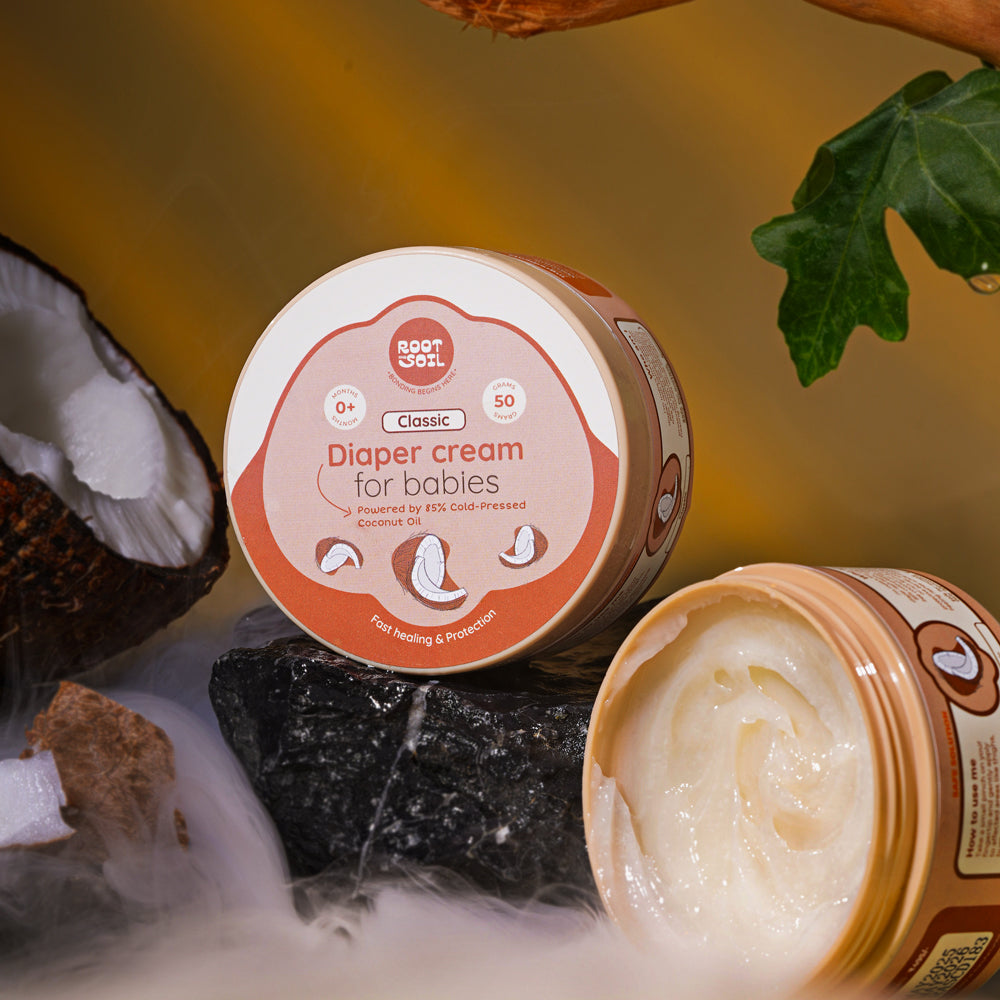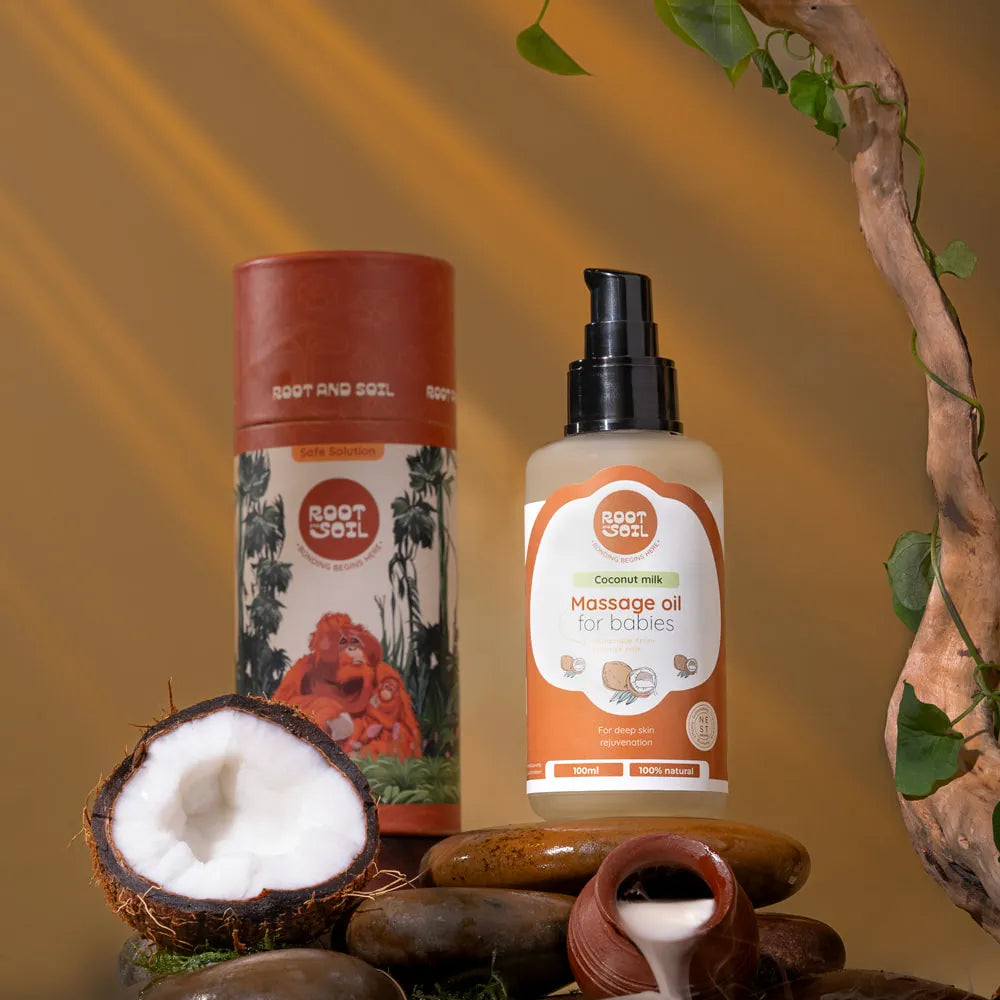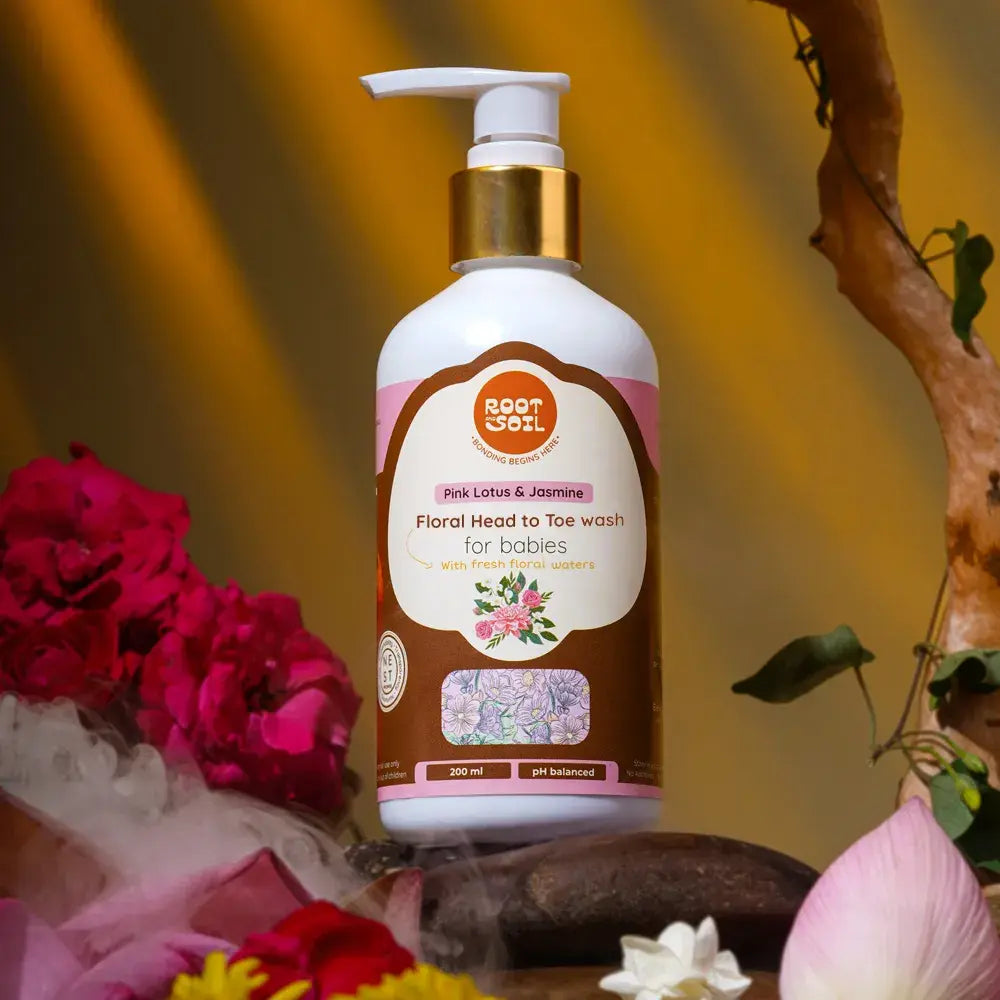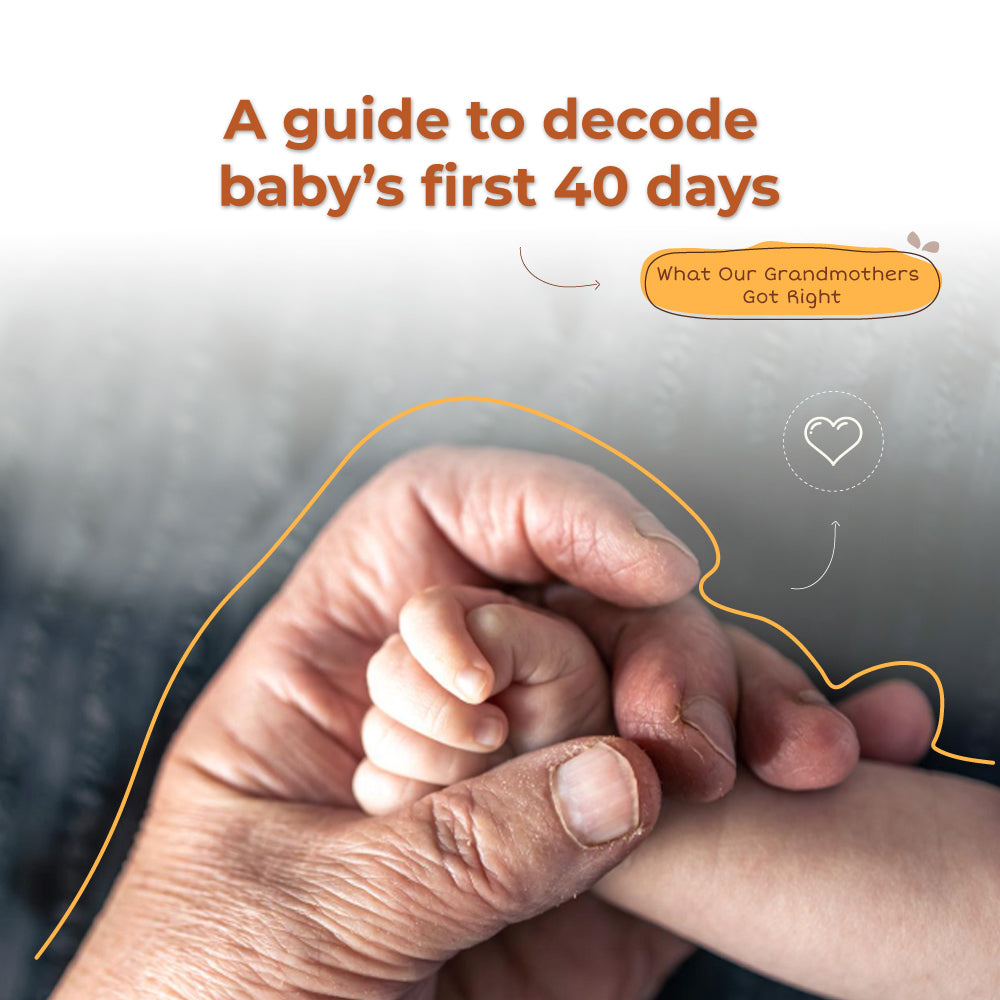
Decoding Baby’s First 40 Days: What Our Grandmothers Got Right
An old home. Curtains drawn to keep the light soft. A pot of warm broth simmering on the stove. A grandmother’s voice carrying both authority and love.
This was how the first 40 days of a baby’s life were once protected... with slowness, with warmth, with reverence.
In today’s rushing world, we must pause to ask: what would it mean to protect those days again?
The Sacred Window
In many Indian traditions, the first 40 days after birth were a time of rest and seclusion for both mother and baby. Not confinement, but cocooning.
Modern science affirms what grandmothers knew: this period allows tissues to heal, hormones to stabilize, lactation to be established, and immunity to strengthen. It also reduces risk of postpartum depression by anchoring the mother in care, not depletion.
The Pillars of the Tradition
-
Rest and Seclusion – protecting both mother and baby from overstimulation and allowing uninterrupted bonding.
-
Warmth in Food and Body – ghee-laden rotis, herbal broths, spices like ajwain and fenugreek to support digestion and healing.
-
Oil Massage – for mother: easing soreness, improving circulation; for baby: resilience and sensory security.
-
Community Care – relatives or elders ensuring chores were handled, leaving the mother’s only work to heal and nurture.

Adapting the Wisdom Today
Life looks different now. Many families live nuclear, support systems are thinner, and modern pressures are heavier. But the essence of the 40-day wisdom can still be reclaimed.
-
Prepare freezer-friendly postpartum meals ahead of time.
-
Ask for help... and accept it... without guilt.
-
Set gentle boundaries for visitors.
-
Choose non-toxic, natural oils and balms for both mother and baby to continue rituals of warmth and touch.
Closing Invitation
The first 40 days will pass in the blink of an eye. Protect them like you would a rare, precious jewel... for they will never come again.
FAQs: The First 40 Days of Postpartum
1. Why specifically 40 days?
Many traditions see 6 weeks as the body’s healing cycle... uterus shrinking, hormones balancing, and wounds recovering. Forty days allow both mother and baby to stabilize before resuming social life.
2. Is strict seclusion necessary?
Not always. The essence is protection, warmth, and rest. While complete seclusion may not fit modern life, setting clear boundaries for recovery is still essential.
3. Why is warmth emphasized postpartum?
After birth, the body is vulnerable to chills due to blood loss and hormonal shifts. Warm oil massages, warm food, and cozy clothing help restore circulation and comfort.
4. What foods are recommended in this period?
Traditionally, light and warming foods like moong dal, panjiri, ajwain water, and ghee-rich preparations are given. They aid digestion, support lactation, and strengthen the mother’s body.
5. How does rest benefit the mother?
Rest allows healing tissues to repair, lowers risk of postpartum depression, and preserves energy for milk production and baby care. Overexertion in this window may lead to long-term exhaustion.
6. What makes Root and Soil different from other baby care brands?
Root and Soil is built on the principle of purity without compromise. We use cold-pressed, chemical-free, nutrient-rich ingredients - never petroleum, parabens, or artificial perfumes. Our products are slow-crafted to nurture like nature intended, honoring both tradition and modern science.
7. Are your products safe for newborns?
Yes. Every formulation is designed for a baby’s delicate skin... free from harsh additives, dermatologically tested, and inspired by age-old traditions. We choose ingredients gentle enough for newborns, while still offering deep nourishment and protection.
8. Do your products help with common baby issues like dryness or rashes?
Our oils and butters are formulated to strengthen the baby’s skin barrier, keeping it hydrated and resilient. While not medicinal, parents often notice relief from dryness, flakiness, and irritation when using them consistently.
9. Where are Root and Soil products made?
All our products are proudly crafted in India, in small batches, under strict quality controls. We work closely with local farmers and suppliers to ensure ethical sourcing and authenticity.
